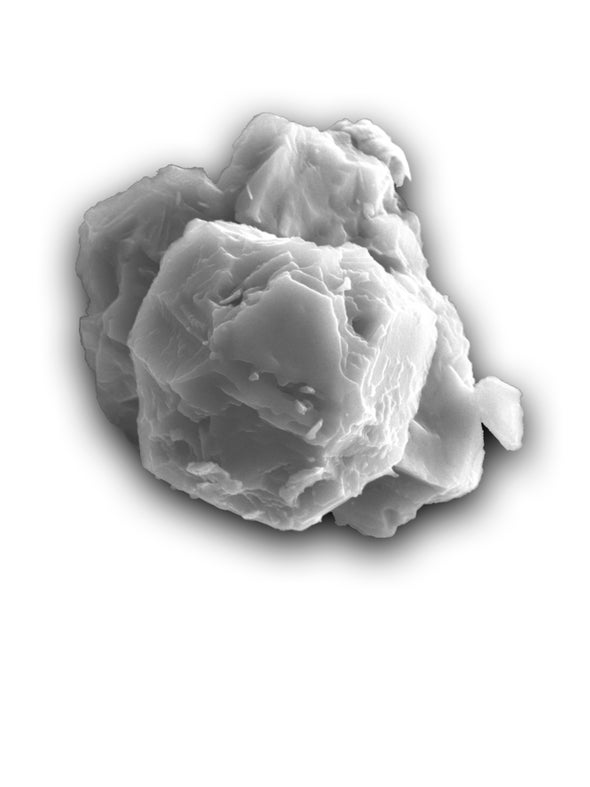(单词翻译:单击)
听力文本
This is Scientific American's 60-second Science, I'm Christopher Intagliata.
Sunday morning, September 28th, 1969, a fireball lit up the skies north of Melbourne, Australia.
"People were getting ready to go to church, and then they heard this loud sonic boom. Some of them saw the bright fireball in broad daylight, and people were surprised. They said, 'What's going on, especially those who were not outside, they really...is there an airplane that came down? It sounded really dramatic.' And then suddenly, shortly after that, there was a smell that was detectable over the whole area. People describe it as methylated spirits—a strong organic smell."
Cosmochemist Philipp Heck of Chicago's Field Museum describing the spectacular arrival of what's now known as the Murchison meteorite, named for the village where it was found. A portion of the space debris now resides at the Field Museum. And Heck says it's our best source of presolar stardust—meaning stardust older than the solar system and the sun itself.
"I call it a scientific treasure trove."

Inside the meteorite is dusty debris left over from when stars slightly larger than our sun fizzled out. Over millions of years, those dust grains were battered by cosmic rays, which slightly altered their composition. Atoms of elements got broken down into smaller ones like neon and helium. And then some of that stardust was swallowed up within rocks—such as the Murchison meteorite—during the formation of our solar system. Those rocks served as time capsules, preserving the material for unimaginable ages.
Previous astronomical observations have hypothesized that there was a "baby boom" of stars about seven billion years ago. By studying the Murchison grains' elemental composition, Heck's team was able to date 49 grains and found that two thirds of them were 4.6 to 4.9 billion years old.
"And that all makes sense, because the parent stars—they formed seven billion years ago, and it took them about two to 2.5 billion years to evolve, become planetary nebula and become dust-producing."
The results are in the Proceedings of the National Academy of Sciences.
Some of the grains are actually up to seven billion years old, making them the most ancient material on Earth—delivered here without notice, on a quiet Sunday morning, 50 years ago.
Thanks for listening for Scientific American's 60-second Science. I'm Christopher Intagliata.
参考译文
这里是科学美国人——60秒科学系列,我是克里斯托弗·因塔格里塔。
1969年9月28日是周日,那天上午,一个火球点亮了澳大利亚墨尔本北部的天空。
“当时人们正准备去教堂,之后他们听到了巨大的音爆。有些人在大白天看到了明亮的火球,人们非常惊讶。尤其是不在外面的人,人们都在问:这是怎么回事?是飞机坠毁了吗?声音真的非常大。之后不久,整个地区突然出现了一股能闻到的气味。人们说那是甲基化酒精,一种强烈的有机气味。”
芝加哥菲尔德博物馆的宇宙化学家菲利普·赫克描述了现在被称为“默奇森陨石”来临时的壮观景象,该陨石是以其被发现的村庄名字而命名。一部分太空碎片现在保存在菲尔德博物馆。赫克说这是有关前太阳系星团的最佳资料,前太阳系星团指比太阳系和太阳本身更古老的星团。
“我称之为科学宝藏。”
陨石内部是比太阳稍大的恒星逐渐消亡后留下的灰尘碎片。数百万年前,这些灰尘颗粒受到了宇宙射线的袭击,之后其成分略有改变。成分中的原子被分解成更小的原子,如氖和氦。之后,在我们太阳系形成的过程中,部分星尘被默奇森陨石之类的石头所吞噬。这些石头就像时间胶囊,将这些物质保存到难以想象的年代。
此前的天文学观测曾假定,约70亿年前存在过恒星的“婴儿潮”。通过研究默奇森陨石颗粒的元素成分,赫克的团队能够确定49个颗粒的年代,并发现其中三分之二的年龄在46到49亿年之间。
“这一切都讲得通,因为母星在70亿年前形成,用大约20亿到25亿年的时间进化成行星状星云,并产生星尘。”
研究结果发表在《美国国家科学院院刊》上。
其中一些颗粒实际上已经有70亿年的历史,这使它们成为地球上最古老的物质,在50年前一个安静的周日上午,在没有事先通知的情况下被送到这里。
谢谢大家收听科学美国人——60秒科学。我是克里斯托弗·因塔利亚塔。
译文为可可英语翻译,未经授权请勿转载!
重点讲解
重点讲解:
1. light up 照亮;发亮;
On September 5, at the end of the festival, a massive display of fireworks will light up the sky around Broadlands.
9月5日,也就是庆祝活动的最后,会有大型焰火表演照亮布罗德兰附近的夜空。
2. fizzle out 虎头蛇尾地结束;草草收场;
The railway strike fizzled out on its second day as drivers returned to work.
由于司机复工,铁路罢工第二天就草草收场了。
3. swallow up 吞没;淹没;
The tear will eventually swallow up the entire galaxy, possibly the universe.
裂口会吞噬整个星系,甚至是整个宇宙。
4. make sense 可以理解;讲得通;
On the face of it that seems to make sense. But the figures don't add up.
乍一看,似乎讲得通,但这些数字对不起来。


